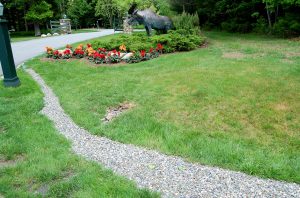- It’s possible to get into real estate with little-to-no savings.
- Investors who started with very little share the strategies they used to get their first properties.
- Some raised capital and took advantage of seller financing. Others bought with partners and split upfront costs.
One of the biggest barriers to entry when it comes to buying real estate is capital. Between the down payment and closing costs, purchasing a home can require a lot of upfront cash.
It’s possible, however, to get your foot in the door with little-to-no savings.
Insider has spoken to a handful of successful investors who have done so. Here are the creative financing strategies they used.
20-year-old friends and college dropouts Caleb Hommel and Chuck Sotelo raised capital and structured a seller financing deal
When Caleb Hommel and Chuck Sotelo were looking for their first property to invest in, they had three stipulations: they wanted a multi-family property, they wanted to inherit tenants, and the seller had to be open to seller financing.
The third requirement was the most important, since they wouldn’t be able to buy a property without it.
Hommel and Sotelo, who met on the first day of high school, were teenagers when they decided they wanted to invest in real estate. They didn’t have any savings — except a couple hundred dollars each — nor did they even know what their credit scores were. They were still in junior college at the time and delivering food to pay for an online real estate mentorship program.
Seller financing was necessary considering their age and financial standing, Sotelo told Insider: “We worked for DoorDash and made like 400 bucks a month. Nobody’s going to give us a bank loan.”
For their first property, a $900,000, 10-unit building in south Texas, they found three investors who each put in $30,000.
“Raising the money wasn’t as hard as I expected it to be,” said Hommel. “It was just reaching out to anybody and everybody, presenting our deal, and seeing if they’d be interested.” It helped that they’d put so much work into finding an excellent deal, he added: “Once we realized that all we needed was the deal to be good enough, the process became a whole lot easier.”
Zeona McIntyre obtained a private loan, rather than going through a traditional mortgage lender
Like Hommel and Sotelo, Boulder-based investor Zeona McIntyre couldn’t qualify for a mortgage when she first started looking at property.
She didn’t have a traditional job, nor did she have substantial savings. But she wanted to buy an investment property — specifically, she’d found a $162,000 one-bedroom condo in Boulder. To make it happen, she reached out to one of her former landlords who was also an investor and operated as a private money lender, and asked for a loan.
“I practiced my speech in the shower, got my courage up, and went and talked to him,” she said. “It was surprisingly easy. I must have caught him on a good day with enough money in his bank, but he was very much open and excited to help me out. We worked out a private loan and he didn’t need to verify my income or anything. He knew that I was working in massage and I felt like I could afford it.”
McIntyre continued using various creative financing strategies as she built up her portfolio.
Sean Allen bought with a friend and split the upfront costs through syndication
Sean Allen got started with $8,000 in savings. It wasn’t enough to buy a place on his own, so he went in on his first property with a friend.
Combined, they had about $16,000 in cash, said Allen. They worked backwards and figured they could afford something around $60,000. That purchase price would allow them to put 20% down ($12,000) and have $4,000 left over to go towards closing costs.
They were both living in southern California and figured they probably weren’t going to come by a $60,000 property in that market. So they started looking in Greensboro, North Carolina, where Allen went to college.
They flew to Greensboro to meet with a real-estate agent, looked at properties, and found one they could afford. They put 20% down and did a few minor home-improvement projects. After finding tenants, they started profiting about $220 a month.
Natia and Jervais Seegars used a grant and an FHA loan to buy a $191,000 home with $2,000 upfront
Before Natia and Jervais Seegars could afford to buy their first home, they got a lot of “no’s” from lenders. But after three years of building their credit and paying down debt, they finally qualified for a mortgage.
They closed on a $191,000 home in North Carolina, where they were living at the time, in September 2006 and spent just $2,000 upfront.
That’s partly because they financed it with an FHA loan, which is a government-backed mortgage that gives people the opportunity to buy a home with down payments as low as 3.5%.
A 3.5% down payment on a $191,000 home, however, would come out to about $5,700 — and that number doesn’t include closing costs, which typically end up being 2% to 5% of the loan cost. The couple managed to close with just $2,000 of their own savings thanks to a grant that they qualified for at the time: The Genesis Program, which offers down payment assistance to low- and middle-income home buyers using an FHA loan.
NOW WATCH: Popular Videos from Insider Inc.
Loading…
Read the full article here














